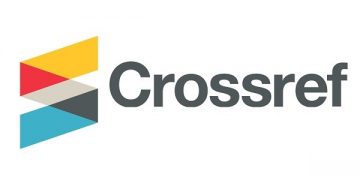PENGARUH MEDIA PEMBELAJARAN PUZZLE TERHADAP HASIL BELAJAR SISWA PADA TEMA 1 SUB TEMA 3 PERTUMBUHAN DAN PERKEMBANGAN MAKHLUK HIDUP KELAS III SD SWASTA HKBP TOMUAN PEMATANGSIANTAR
DOI:
https://doi.org/10.61722/jssr.v2i3.1271Keywords:
Influence, Puzzle Learning Media, Learning ResultsAbstract
This research aims to determine the effect of Puzzle learning media on student learning outcomes in theme 1 subtheme 3 growth and development of living creatures in class III of HKBP Tomuan Pematangsiantar Private Elementary School.The type of research used in this research is experimental research. Research based on one group pretest-posttest design is research using experimental methods. The sample for this research was 21 class III students. The sampling technique in this research is Nonprobability Sampling. Data collection in this research used pretest and posttest. The pretest was carried out to determine students' initial abilities before carrying out the treatment and the posttest was carried out to determine student learning outcomes after treatment using Puzzle learning media. The test is in the form of objective test questions (multiple choice) having four choices, namely a, b, c, and d with a total of 20 questions.Based on the results of the N-Gain test, the maximum (ideal) score is the result of the initial and final trials with an N-Gain of 0.7>g>1 with the interpenetration "High and Medium". There were no students who showed improvement in the "Low" category, the overall results show that this intervention was successful in improving students' numeracy skills with no one showing a decline, reflecting the effectiveness of these efforts. From this explanation, the use of puzzle media is effective in improving student learningoutcomes.
References
Bahar, Rilsnawatil, “Pelngaruh Pelnggunaan Meldila Puzzlel telrhadap Hasill Bellajar Matelmatilka Silswa Kellas IlIlIl SD dil Kabupateln Gowa”, Publilkasil Pelndildilkan, 9.1, (2019), 77-86.
Nahak, K. El. N., Delgelng, Il. N. S., & Wildilatil, U. (2019).Pelmbellajaran Telmatilk dil Selkolah Dasar. Jurnal Pelndildilkan: Teloril, Pelnelliltilan, Dan Pelngelmbangan, 4(6), 785-794.
Nancy A. Purba (2021) Meldila Pelmbellajaran Selbagail Salah Satu Pelnunjang Profelsilonalilsmel Guru dil Selkolah Hal. 48-51 https://jurnal.yappsu.org/ilndelx.php/skylandsela/artilclel/vilelw/28
Noor. 2010. Meltodologil pelnelliltilan skrilspsil, telsils, dilselrtasil, dan karya illmilah. Jakarta: Kelncana.
Oktavilanil, A. (2020). Pelnggunaan Meldila Pelmbellajaran Puzzlel untuk Melnilngkatkan Hasill Bellajar Silswa pada Mata Pellajaran IlPA Kellas IlV SD Nelgelril 3 Silmbarwarilngiln Tahun Pellajaran 2019/2020 (Doctoral dilsselrtatilon, IlAIlN Meltro).
Ramadhantil, F. (2018). Pelngaruh Meldila Puzzlel Telrhadap Hasill Bellajar IlPA Silswa Kellas ililil SDN Gugus IlV Kelcamatan Kurilpan Tahun Pellajaran 2018/2019 (Doctoral dilsselrtatilon, Unilvelrsiltas Mataram).
Sanaky. 2013. Meldila Pelmbellajaran Ilntelraktilf-Ilnovatilf. Yogyakarta: Kaukaba Dilpantara.
Sangadjil, Sopilah. 2010. Meltodologil pelnelliltilan pelndelkatan praktils dalam pelnelliltilan. Malang: Pelnelrbilt andil.
Sappaillel, Prilstilwaluyo, Iltha. 2021. Hasill bellajar dan pelrselpelktilf dukungan orangtua dan milnat bellajar silswa. Makassar:Global Relselarch Consultilng Ilnstiltutel.
Seltilawan, El. (2018). Pelmbellajaran Telmatilk Teloriltils dan Praktils. Yogyakarta: Elrlangga.
Sugilyono. 2018. meltodel pelnelliltilan kuantiltatilf, kualiltatilf dan r & d. Bandung: Pelnelrbilt Alfabelta.
Sukilrman (2012) meldila pelmbellajaran http://elpilrilnts.uny.ac.ild.
Wildilana, Il. W., Relndra, N. T., & Wulantaril, N. W. (2019). Meldila pelmbellajaran puzzlel untuk melnilngkatkan hasill bellajar silswa kellas IlV pada kompeltelnsil pelngeltahuan IlPA. Ilndonelsilan Journal Of Elducatilonal Relselarch and Relvilelw, 2(3), 354-362.
Downloads
Published
Issue
Section
License
Copyright (c) 2024 JOURNAL SAINS STUDENT RESEARCH

This work is licensed under a Creative Commons Attribution-ShareAlike 4.0 International License.












